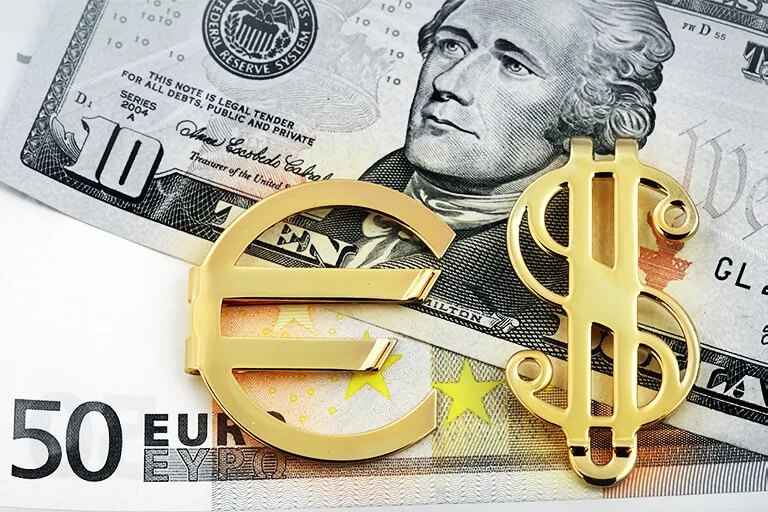How Do Central Banks Influence Forex Exchange Rates?
Central banks are one of the important financial components that affect forex exchange rates because they are official institutions where many important financial decisions and policies are made.
In many studies conducted in recent years, one of the factors that determine the dynamics of today’s financial universe is central banks and their management approaches. In addition to the policies determined by central banks, the supply and demand relationship and international developments also directly affect forex exchange rates.
Since investment projects that aim to make profits through the values of different currencies in the Forex market are managed, central bank decisions undoubtedly have direct effects on these exchange rates and investment portfolios.
For this reason, individual investors investing in forex markets need to follow central bank decisions, interest rates and new policies and make accurate analysis. Forex investors need to accurately analyze the effects of the decisions of the central bank of the state in which they reside on the market.
Supply and demand relations of local currencies are improved with the interest rates determined by central banks. While the demand for foreign exchange increases as central banks increase interest rates, a decrease in the value of local currencies can be observed when central banks reduce interest rates. These changes directly cause changes in the forex market.
What Are The Monetary Policy Tools Central Banks Use To Affect Forex?

Central banks use some monetary policy tools that aim to make local currencies more valuable. The most common among these are changing interest rates, developing reserve requirements, open market operations and communication policies. Through these monetary policy tools, they can also manipulate the forex markets by causing changes in the values of local currencies.
Interest rates and central banks determine short and medium term policy rates. If the central bank in a country increases the interest rate, it reduces the mobility in the economic ecosystem and inflation rates are kept at more balanced levels.
If the central bank reduces the interest rate, economic activity increases and causes more interactive markets. Investors in the Forex market need to follow changes in these rates and new central bank policies.
In addition to interest rates, central banks determine the dynamics in forex markets through monetary policy tools such as reserve requirements, open market operations and communication policies. Central banks determine the credit flexibility of banks by requiring other private banks to keep a certain amount of reserves.
It also affects liquidity in forex markets through open market operations. As communication policies, the process of sharing policy goals and expectations with the society is also an important monetary policy tool.
How Do Interest Rate Decisions Impact Currency Values In Forex Trading?
Interest rate decisions and policies of central banks are the main source of influence on exchange rates in the forex market. Central banks aim to improve the supply and demand balance of the local currency by developing monetary policies in line with the objectives of the political management approach. So how do interest rate decisions affect the exchange rates that investors who invest in forex trading are interested in?
When central banks increase interest rates, local exchange rates become more attractive to other investors and consumers. For this reason, investors aim for high interest returns and turn to this exchange rate in the forex market.
If the demand for a currency increases in the forex market, its value will increase. The most effective factor balancing this demand is the central bank’s interest rate decisions.
If central banks lower interest rates, local currencies become less attractive to markets. Since this will result in lower interest income, the value of that currency decreases in the forex market.
We observed the direct effects of interest rate decisions on forex markets. Another important issue is the interest rate expectations of investors in the forex market. The central bank’s interest rate decisions and policies can be predicted by market participants and this affects the market in two ways.
What Is Quantitative Easing (QE) And Its Effects On Forex Exchange Rates?
Quantitative Easing is a monetary policy frequently used by central banks. With this policy, central banks aim to reduce inflation rates in the short term by stimulating the economy. Its working principle aims to provide liquidity to the markets through asset or service purchases.
Quantitative Easing offers direct changes to forex markets as well as to every market. With QE policies, if the supply of the local currency in a country is increased, its value is reduced.
This is very effective for investment portfolios managed in the forex market. At the same time, QE policies increase the number of riskier investment options. Interest in risky asset classes increases.
QE policies generally affect forex markets by reducing interest rates. Individual investors who aim to invest their assets in Forex markets with different exchange rates should follow current central bank decisions and policies and may be advised to diversify their portfolios by following these changes.
What Are The Strategies Forex Traders Use When Anticipating Central Bank Moves?

Forex traders who aim to evaluate their assets in different currencies in the Forex markets must follow the new decisions and policies of central banks. Moreover, it is not enough to just follow such developments. At the same time, predicting new decisions and policies of central banks is also a very critical skill for forex markets. So how can forex traders predict the central bank’s next move?
There are some common strategies for forex traders to manage more successful forex investment projects by anticipating new policies and changes proposed by central banks. The most profitable among these are economic data analysis, detailed examination of central bank communication channels, interest rate futures management, and technical analysis tools.
In addition to these technical analysis tools, following international geopolitical developments and events may be useful to predict the stance of central banks in the new period.
How Can Forex Traders Interpret Central Bank Statements And Speeches?
Forex traders central bank, which manages investment projects in Forex markets, needs to keep up to date with the new period statements and statements, analyze these statements correctly and create a more accurate future perspective.
Policy guidance should not be neglected for Forex traders to interpret central banks’ statements in the most successful way. New decisions by central banks regarding interest rates, QE policies, money supply and other dynamics must be anticipated. The emphasis in the statements of central banks is very useful at this point.
It is possible for forex traders to analyze the statements of central banks more accurately through both proper management of expectations and reliable sources. Central banks need to develop both technical and social analysis skills in order to correctly interpret the statements and declarations they periodically present.
See you in the next post,
Anil UZUN
